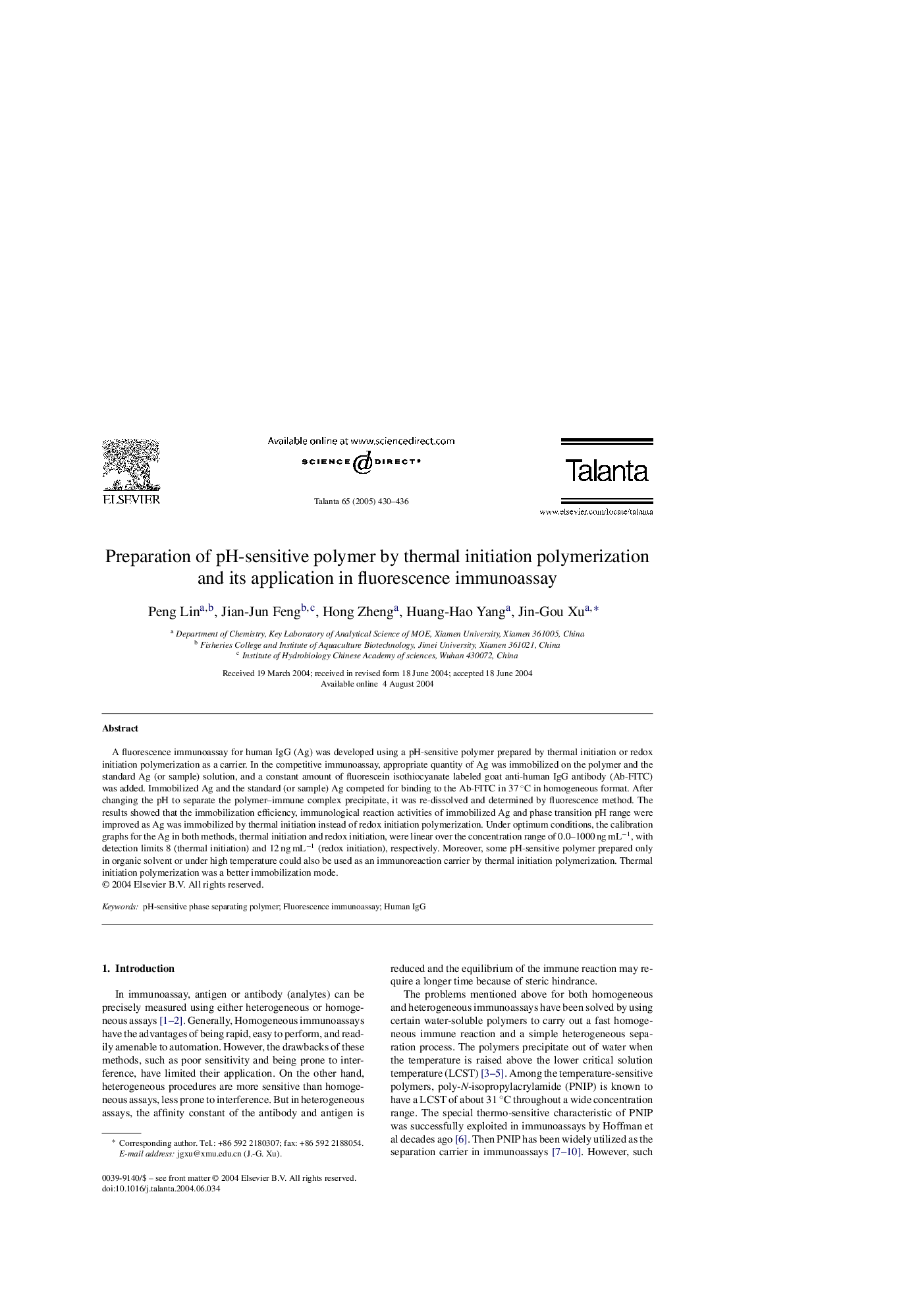| Article ID | Journal | Published Year | Pages | File Type |
|---|---|---|---|---|
| 10560069 | Talanta | 2005 | 7 Pages |
Abstract
A fluorescence immunoassay for human IgG (Ag) was developed using a pH-sensitive polymer prepared by thermal initiation or redox initiation polymerization as a carrier. In the competitive immunoassay, appropriate quantity of Ag was immobilized on the polymer and the standard Ag (or sample) solution, and a constant amount of fluorescein isothiocyanate labeled goat anti-human IgG antibody (Ab-FITC) was added. Immobilized Ag and the standard (or sample) Ag competed for binding to the Ab-FITC in 37 °C in homogeneous format. After changing the pH to separate the polymer-immune complex precipitate, it was re-dissolved and determined by fluorescence method. The results showed that the immobilization efficiency, immunological reaction activities of immobilized Ag and phase transition pH range were improved as Ag was immobilized by thermal initiation instead of redox initiation polymerization. Under optimum conditions, the calibration graphs for the Ag in both methods, thermal initiation and redox initiation, were linear over the concentration range of 0.0-1000 ng mLâ1, with detection limits 8 (thermal initiation) and 12 ng mLâ1 (redox initiation), respectively. Moreover, some pH-sensitive polymer prepared only in organic solvent or under high temperature could also be used as an immunoreaction carrier by thermal initiation polymerization. Thermal initiation polymerization was a better immobilization mode.
Keywords
Related Topics
Physical Sciences and Engineering
Chemistry
Analytical Chemistry
Authors
Peng Lin, Jian-Jun Feng, Hong Zheng, Huang-Hao Yang, Jin-Gou Xu,
